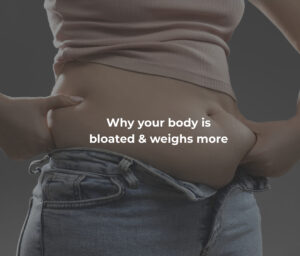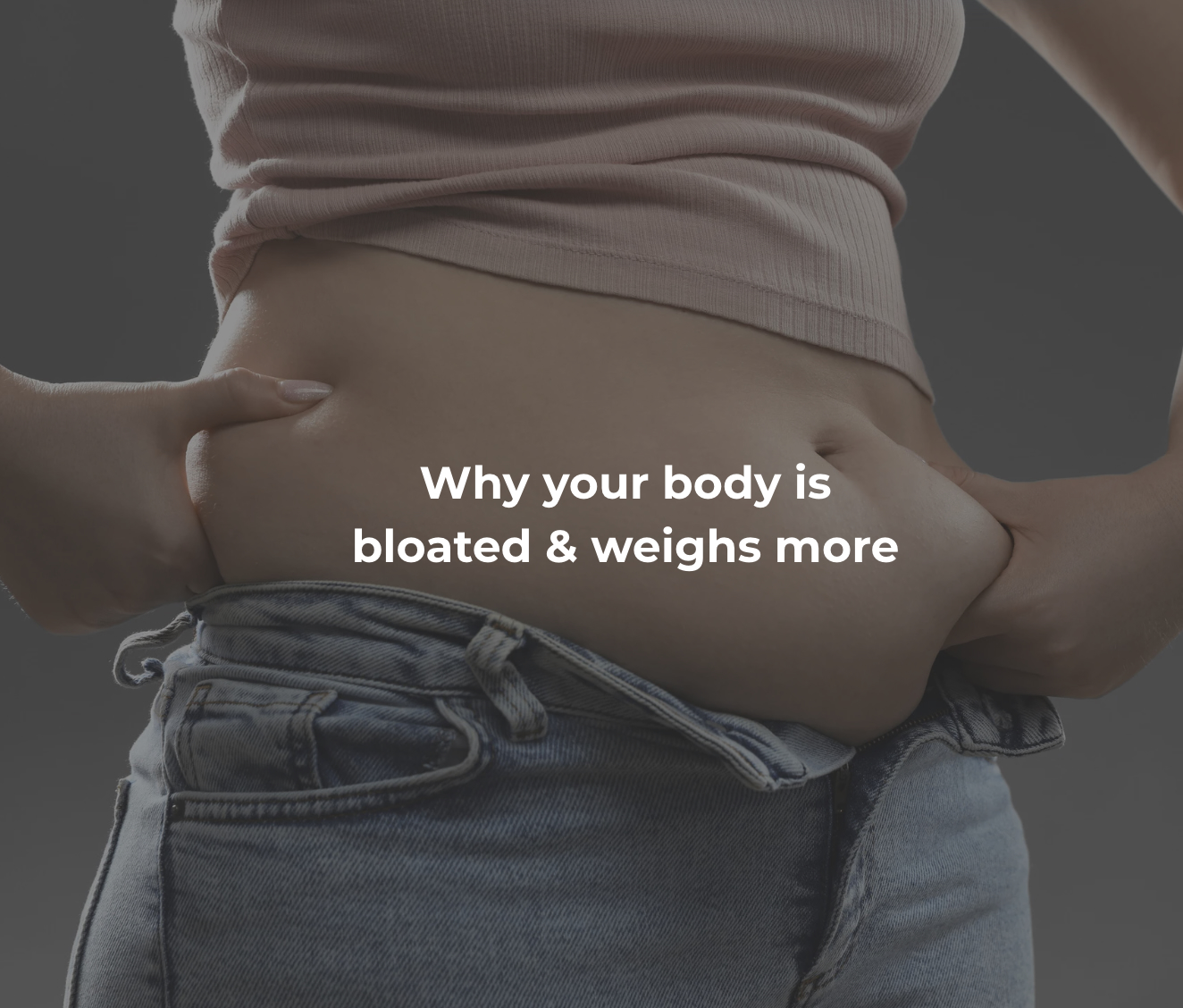If your rings are tight in the mornings, your face or hands are puffy, maybe there’s slower bowels (colon reabsorbs more water), and you keep seeing a heavier number on the scale despite nailing your nutrition… it could be legit water water. Here’ why…
Post-menopause, the stress system in your body (called the HPA axis) loves to “hold water.”
Lower estrogen = increased cortisol.
This combo pushes the body into conserve mode – that is, you’ll retain more fluid until the brain believes there’s plenty coming in.

💧What’s going on…
Less estrogen → more cortisol → more aldosterone:
Them’s a lot of hormones! With less estrogen, cortisol can run higher in the body. In the kidneys, cortisol can mimic another hormone produced by the adrenal glands called aldosterone. It causes fluid retention and bloating by increasing the reabsorption of sodium and water from the kidneys into the bloodstream. Kidneys retain excessive sodium and water, leading to an overabundance of fluid in the body’s tissues, aka bloating.
ADH (anti-diuretic hormone) increases when you’re under-hydrated:
ADH, or antidiuretic hormone (also known as vasopressin), is a hormone produced in the hypothalamus of the brain. When ADH is released, it signals the kidneys to reabsorb more water and release less of it into the urine. Translation – you hold onto more fluid inside the body and become bloated and ‘fluffy’. Can you guess what increases the production of this anti-diuretic hormone? Yup, dehydration.
Studies show that even mild dehydration can cause an increase in ADH production.
Takeaway:
Even mild dehydration can raise ADH, telling kidneys to retain water, make you feel bloated, and increase your water weight. Steady fluid intake (and electrolytes when sweating or extra hot outside) helps keep your body’s water balance in the “comfort zone,” so ADH (and your bloat weight) can dial back.
Why drinking enough actually reduces the bloat:
-
Adequate intake lowers ADH, so kidneys let go of excess water (you release instead of hoard those fluids).
-
Better hydration calms the volume “alarm,” so cortisol-driven water retention eases.
-
Water + electrolytes keep bowel transit moving (less “GI bloat” from slow stool), and support lymphatic flow.
💧💧💧 How to do it – simple & reliable:
-
Aim ~2.0–2.5 L/day (more on hot/sweaty days).
-
Split it: 500 ml on waking, 500 ml mid-morning, 500 ml mid-afternoon, 500 ml evening/around training.
-
Add a pinch of electrolytes on workout/sweaty days, and eat potassium-rich foods (leafy greens, avocado) to balance sodium.
-
Bonus de-puff combo: post-meal 10–15 min walk, protein + veggies at meals, and steady sleep (poor sleep elevates cortisol/ADH too).
Bottom line:
Post-menopause HPA-axis shifts make your body prone to fluid conservation. Paradoxically, consistent, adequate hydration tells your brain and kidneys it’s safe to release that excess fluid —so you feel lighter, digest better, and your “water weight” stops stealing the show.

